Underwater World: Strange Beauties of the Sea
Photography by David Hall
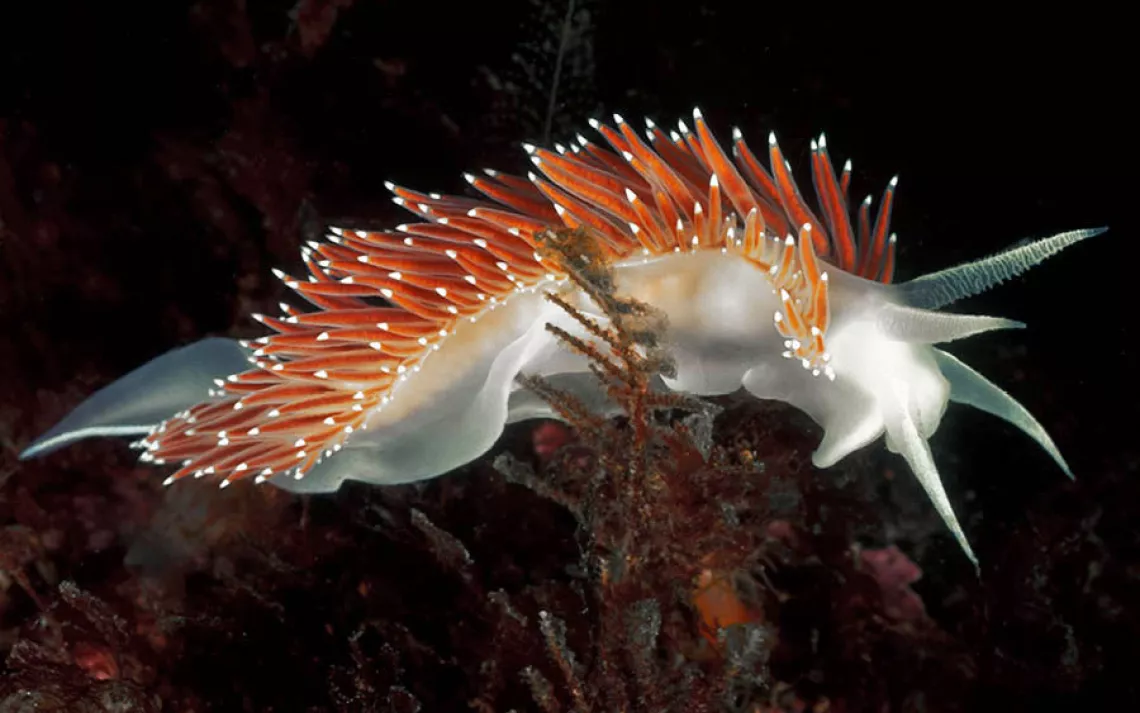
The sea keeps its secrets well. While humans have explored, documented, and colonized nearly every stitch of land on the planet, the vast expanse of the ocean remains mysterious. Rarely photographed underwater creatures can appear alien—their cloudlike, luminous bodies more heavenly than earthly.
The cold, dark waters of the Pacific Northwest teem with these otherworldly animals. Renowned photographer David Hall's book Beneath Cold Seas: The Underwater Wilderness of the Pacific Northwest (University of Washington Press, 2011) documents this delicate ecosystem, which is home to exotic specimens like the red-gilled nudibranch (above), a type of shell-less snail.
The inhabitants of this barely charted world may look like the stuff of science fiction, yet our lives are intertwined. Whether or not we're mindful of it, we share this planet with the nudibranch, the sea anemone, and the octopus. The strange and beautiful creatures in this photo gallery inhabit a swath of the Pacific Ocean just off the coast of British Columbia, where they face threats like overfishing, pollution, and oil tanker traffic. Our actions could forever alter the lives of these marine animals—it's time to meet our neighbors.
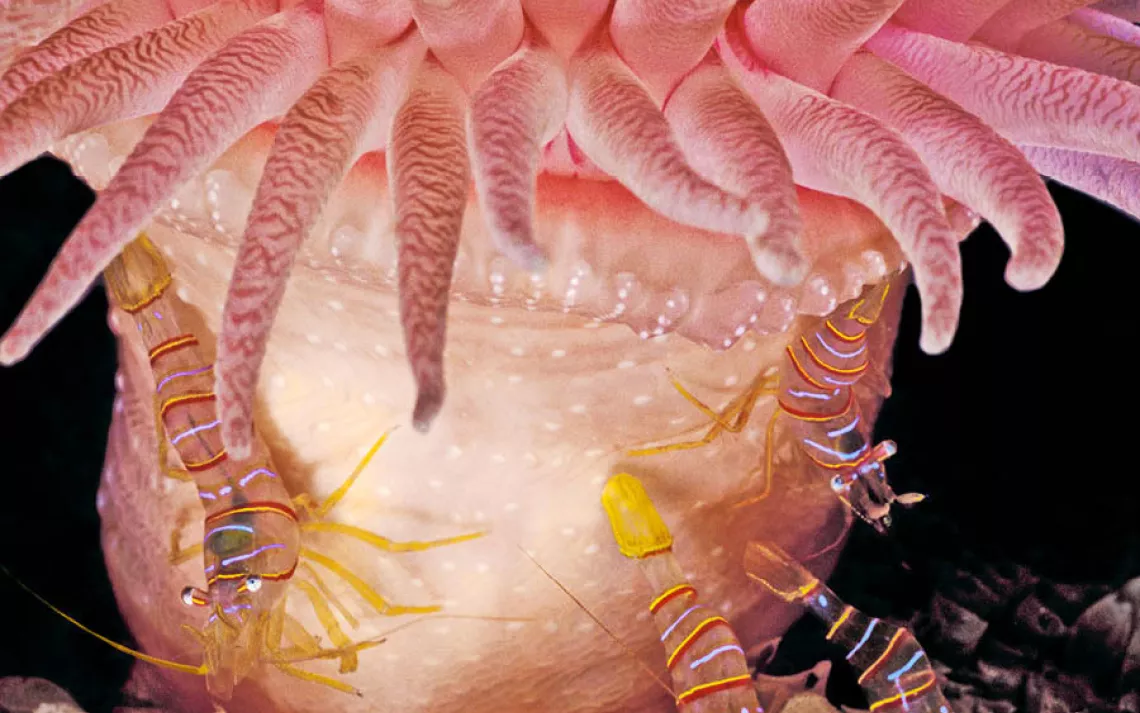
The candy stripe shrimp finds a safe haven beneath the tentacles of the crimson anemone. This living arrangement, called "commensalism," benefits the shrimp and causes no harm to the confection-colored anemone, whose beautiful tentacles are equipped with nematocysts, which sting and paralyze small marine critters. The unlucky prey are then guided into the anemone's central mouth—an opening which also expels waste and "births" larvae.
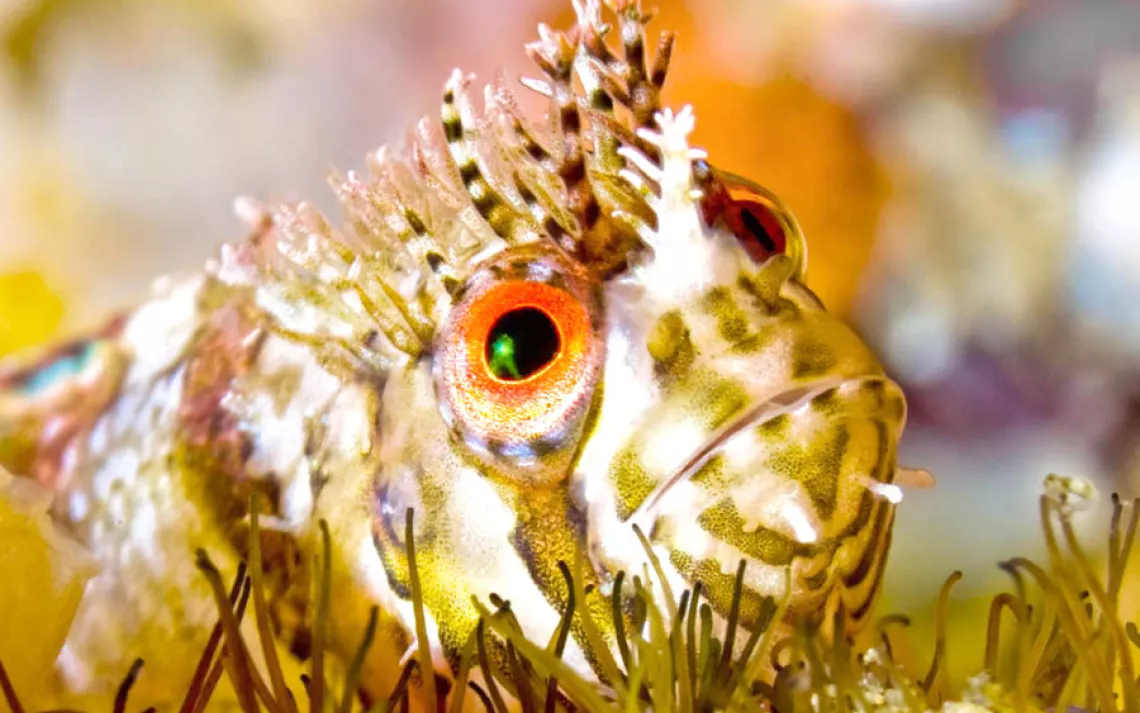
The enigmatic mosshead warbonnet can often be found with its head poking out of a rock crevice, a tubeworm hole, or an old shell. This particular critter was spotted in Browning Pass, in Queen Charlotte Strait. Named for its peculiar head ornamentation, the photogenic fish eats invertebrates and fish.
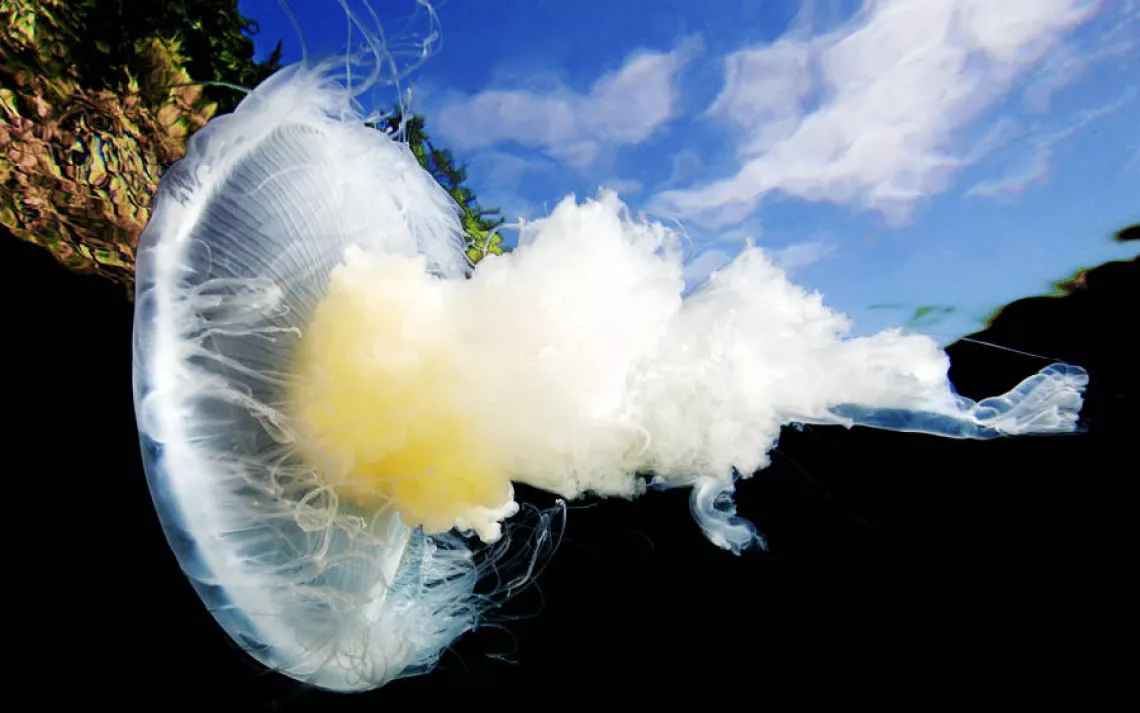
The fried egg jellyfish—so named for its resemblance to the breakfast dish—occasionally attracts hitchhikers. Young crabs may catch a ride on the gelatinous invertebrate's bell, some of which are 2 feet in diameter. The carnivorous jelly's nematocyst-covered tentacles can grow to be 20 feet long. Jellyfish owe their translucency to their makeup: They're 95 percent water.
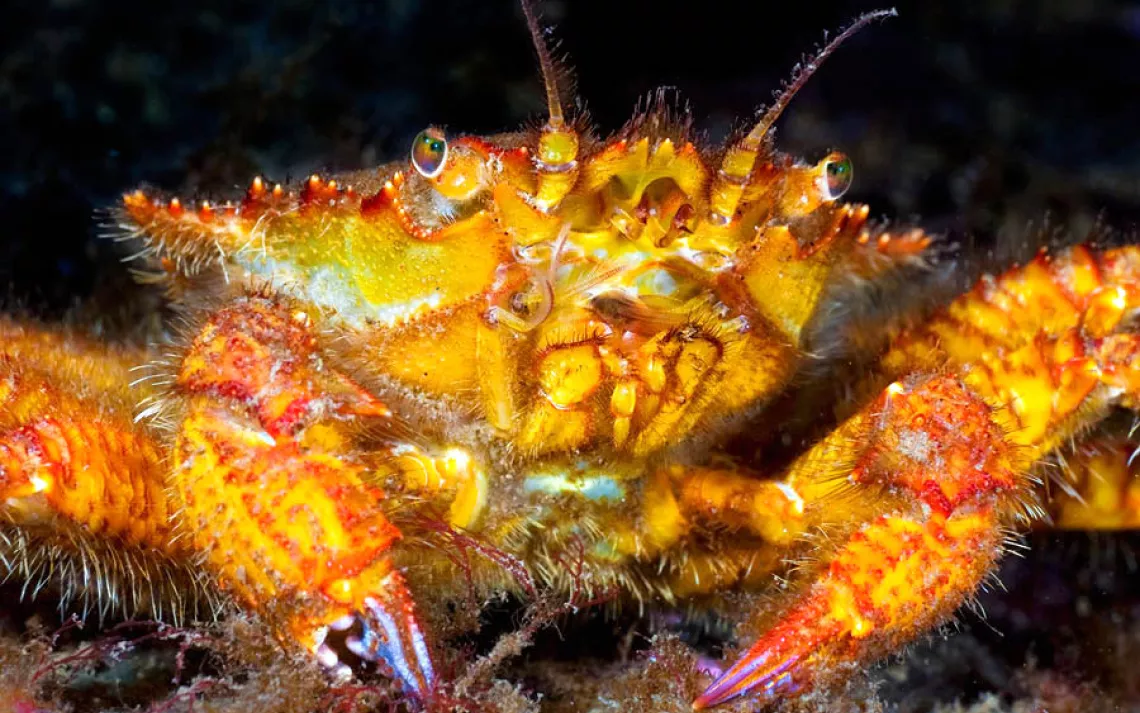
The helmet crab's exoskeleton is shrouded in fine hairs, which, many suspect, help it navigate and locate objects in a dark environment. Creatures like the hermit crab are what drew photographer David Hall to the sea. "When I was ten years old, I dreamed of a career in entomology, and to this day arthropods—insects and other animals with jointed legs and an outer skeleton—hold a special fascination for me," he writes. "After mollusks, there are more species of arthropods in the ocean than any other kind of animal."
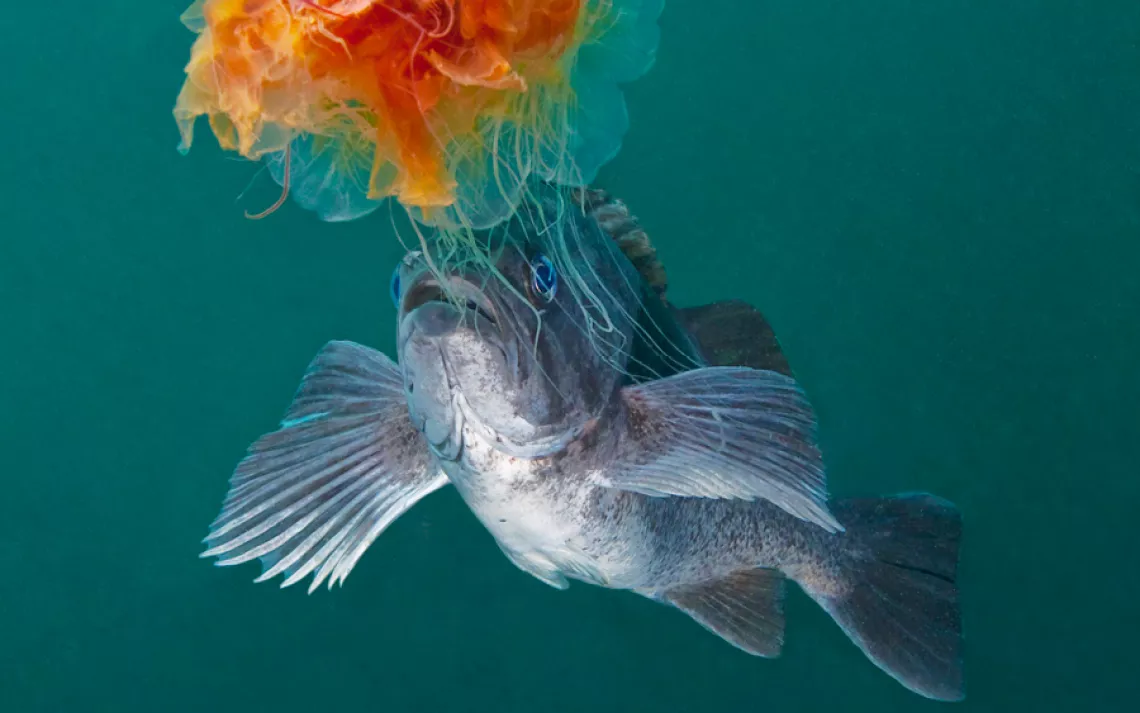
The world's largest species of jellyfish, the lion's mane jelly's bell can grow to 8 feet and its tentacles can stretch more than 100 feet—longer than a blue whale. This particular lion's mane is a more manageable size for the blue rockfish, which maxes out at 21 inches. The rockfish eats a diet of krill, tunicates, small fish, and small plants and seems to ready to devour the jellyfish, but this scene requires a second look: "When I first saw this pair, I assumed the fish was nibbling the jelly's tissues, as sometimes happens," photographer David Hall says. "However, the detailed photographs suggest that the fish is feeding on bits of organic matter adherent to the jelly's tentacles."
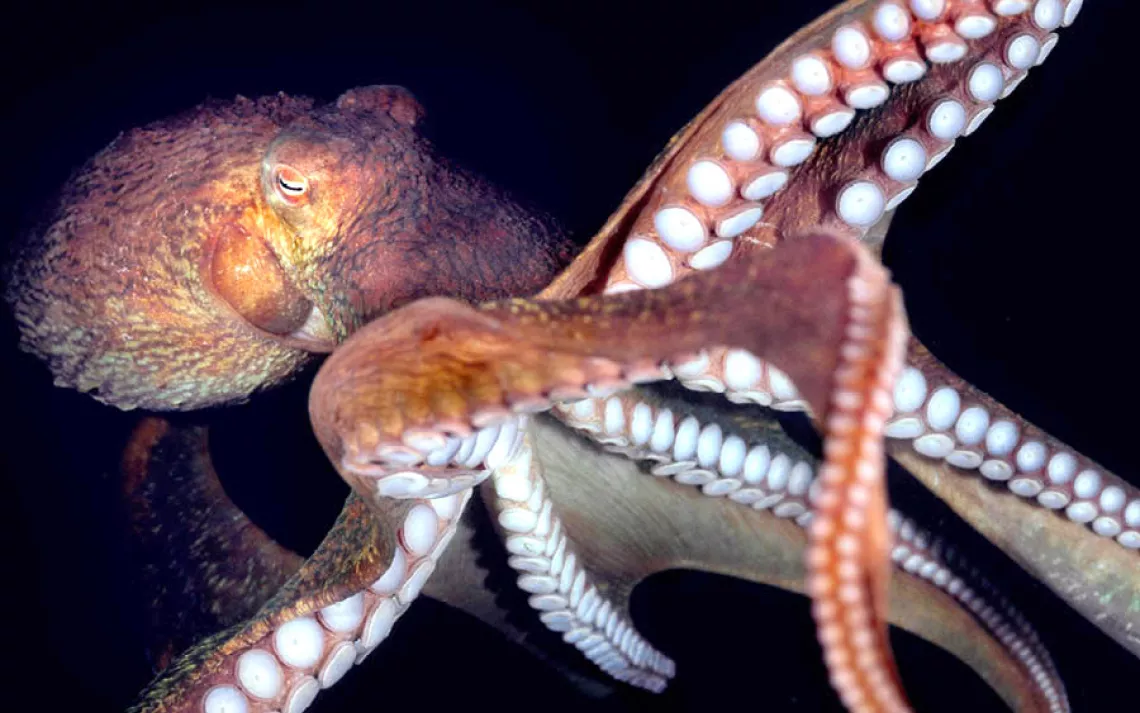
The giant Pacific octopus is the largest of its kind—its arms can stretch 16 feet or more. The clever cephalopod has been known to attack sharks and even seagulls, but its more likely to nosh on scallops, crabs, shrimp, clams, or fish. A master of disguise, it can change the color of its skin to mimic corals, rocks, and plants. In captivity, the highly intelligent invertebrate has performed number of tricks, including opening jars and solving mazes.
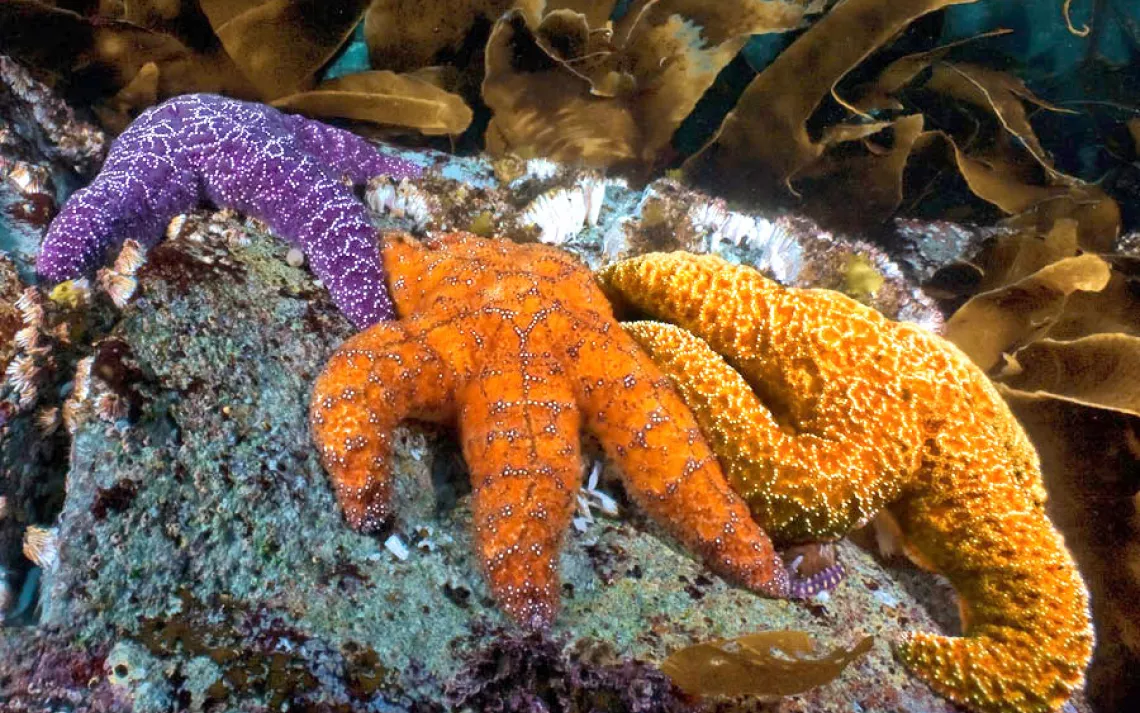
Purple and ocher sea stars are a keystone species, keeping mussel populations in check. To feed, the starfish pries its prey's shell apart, everts its own stomach, and inserts it into the shell opening, where digestive enzymes dissolve the mussel's tissues.
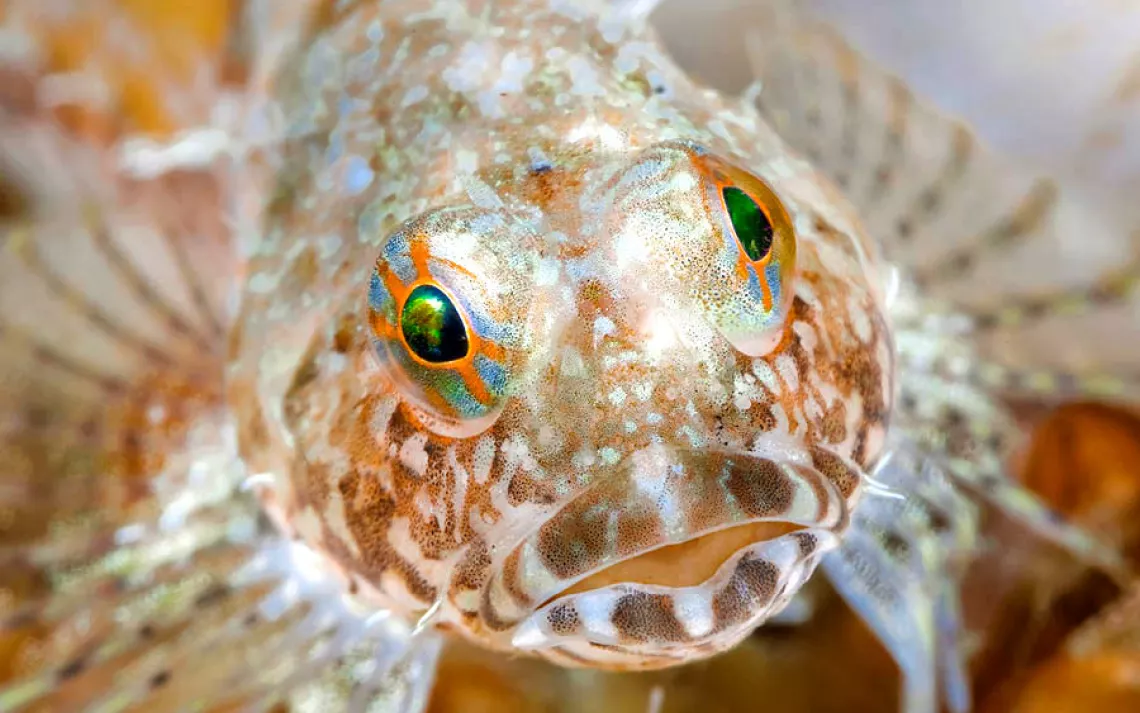
A bottom-dwelling fish, the scalyhead sculpin inhabits intertidal and subtidal regions, where it lays its eggs on rocks during spawning season in the winter and spring. The territorial males guard the eggs. The three- to four-inch-long fish eats small invertebrates and sports a variety of different colors.
By Della Watson
Della Watson is Sierra's web editor.
More articles by this author The Magazine of The Sierra Club
The Magazine of The Sierra Club


